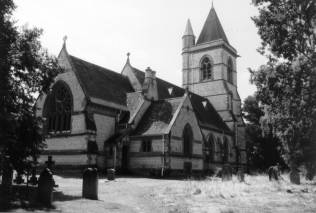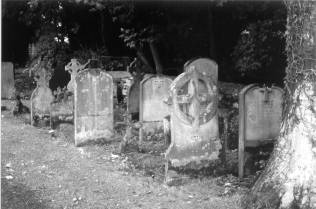
The Finmere Record
The Finmere Record
SATURDAY, 23 SEPTEMBER 2000
Henrietta Anne was the daughter of Charles I of England and Henrietta Marie from France. She was born in 1644 at Exeter and was exiled by Cromwell with her brother, Charles II. She was unlucky in her attempts to marry and was rejected by the Duke of Savoy and the de Medici heir of Tuscany.
In 1661, the year after her brother was restored to the throne, she married Philippe, Duke of Orleans. The marriage was rather unfortunate. Philippe had been a pretty boy who liked dressing as a girl and helping the court ladies sew. As he grew older, his effeminacy and prettiness became more pronounced; he loved parties, gossip, jewels, fussy clothes and the tinkle of bells. Philippe remained amorous for only two weeks after his marriage, though the couple still had four children.
Henrietta died suddenly on 30 June 1670 aged only twenty-six. Poison was suspected and so was Philippe, but an investigation by the Duke of Montagu found that she had died of natural causes. Henrietta is buried at St. Denis, France.
With the exception of Richard de Adderbury in the fourteenth century, Richard Horn was Finmere’s longest-serving Rector. He was appointed in 1636 and served the parish for forty-five years.
Horn was Rector during a lively period of history. In 1642, he noted the beginning of the Civil War in the parish registers. Two years later, soldiers from the Parliamentary garrison at Newport Pagnell routed a troop of Cavaliers billeted in Finmere, probably at the Rectory. The King’s men fled south across the fields but surrendered at Fringford.
The routing of the Cavaliers would not have pleased Richard Horn. He was subsequently, in his words, “sacrificed to a three-halfpenny minister.” Richard Warr, a Parliamentarian, took his place as Rector and Horn remained in the village in miserable destitution.
Horn was restored to post by 1661 when, to add to his misery, his Rectory was destroyed by a “tempestuous hurricane from the west.” He rebuilt it, only for it to be burnt down in 1668. Horn described the conflagration with characteristically dramatic phrases:
Oh! Sorrow! Here now the great House of the Priest has fallen by a fire overcoming it.
In Horn’s time, Finmere was a small parish of perhaps about two hundred people and about two marriages were celebrated at St Michael’s church each year. But in 1670, seventy-five year old Richard Horn presided over nine marriages, and a further seventy-one during the next seven years.
Finmere had become the popular place to be married and couples came from Adderbury, Bicester, Buckingham, Grendon Underwood, Waddesdon and many other places. Temperantia Horn, possibly a relation and the daughter of the Rector of Bidleston [? Biddlesden] married Issaac Yates “without parents’ consent.” Another couple were married without the required certificates.
Why Horn presided over these weddings in not known. His notes in the parish register, however, suggest that he was becoming increasingly eccentric. It is in this context that we should see his unconventional record of the death of Henrietta Anne (below). It is a note written by an idiosyncratic old man moved by the sudden and distant death of an unhappy young woman in France.

In 1886, James Charles Blomfield prefaced his History of Finmere with a quote from Gilbert White’s Natural History of Selborne published in 1789:
If stationary men would pay some attention to the districts in which they reside, and would publish their thoughts respecting the objects that surround them, from such material might be drawn the most complete county histories, which are wanting in several parts of this kingdom.
White’s natural history of his Hampshire village was a classic work by Blomfield’s day but there may have been other reasons for his choice of this quote.
For much of the first half of the nineteenth century, the parish can be accurately described as “Palmer’s Finmere.” Although he resided at Mixbury until 1852, Rector William Jocelyn dominated life in Finmere for nearly forty years from 1814. Curate John Burgon described him as a “grave good man, who exercised supreme parental and patriarchal authority throughout the parish.”
Palmer married Dorothea Richardson, daughter of Reverend William Roundell of Gladstone, Yorkshire. Their second son, born in 1812, was named Roundell after his grandfather.
Roundell was educated at Rugby, Winchester College and Christ Church and Trinity Colleges, Oxford. He was called to the bar in 1837 and became a Queen’s Counsel in 1849. In 1847, he was elected to Parliament to represent Plymouth. His appointment to Solicitor-General in 1861 was accompanied by a knighthood, followed two years later by promotion to Attorney General. In 1872, his career reached its peak when he was promoted Lord Chancellor and awarded a peerage.
Seven years earlier, he had purchased the Temple and Blackmoor estates in Selborne, Hampshire and he took the title Lord Selborne and, in 1882, Earl Selborne. Roundell was a keen student of natural history. When the foundations for his new house at Blackmoor were excavated, Roman pottery and coins were unearthed. Selborne contributed an account of the discoveries to a new edition of White’s Natural History in 1875.

Roundell Palmer built this church at Blackmoor near Selborne, in 1869
Although raised in Mixbury, Roundell did not forget Finmere. In 1858, he contributed £100 [now £6,600] to the reconstruction of St Michael’s church and in 1872, he donated the interest on £60 of stock, then £1 17s 6d a year [£110], to the Clothing Club charity or to be divided among five old men. At Blackmoor, he built a model Victorian estate village which became the centre of a new parish of Blackmoor.
With the close links between Finmere and Selborne through the Palmer family, Blomfield’s choice of a quote from Gilbert White was particularly appropriate. Roundell, who also anonymously contributed a biography of his father to Blomfield’s History of Mixbury, may have suggested it.
We are preserving the Selborne–Finmere link in our Millennium History. The current Earl Selborne, the great-grandson of Roundell, has kindly agreed to contribute the foreword the book.

Several members of the Palmer family are buried in Mixbury churchyard, including William Jocelyn Palmer
Work on the History is progressing well. The text is complete except for minor details and we are now editing and proofreading. Formatting for publication should be complete by late October or early November. The publication date is likely to be late November, rather than October as planned.
A free copy of the book will be delivered to every household in Finmere and Little Tingewick.
There is still time to order extra copies at the pre-publication price of £9 (£12 after publication.) If you wish to purchase copies, please contact Ian Hudson in the next few days: telephone: 01280 847951, email: ian.hudson2@ntlworld.com.
Information on the Duchess of Orleans is partly drawn from the website on European royalty by Brigitte Gastel Lloyd, Arizona (http://worldroots.clicktron.com/brigitte/index.html). Information on Roundell Palmer is from the Dictionary of National Biography and The Parish Church of Saint Matthew, Blackmoor: A Short Guide by the Reverend RJ Inkpen.
This is the third in an occasional series of the Finmere Record.